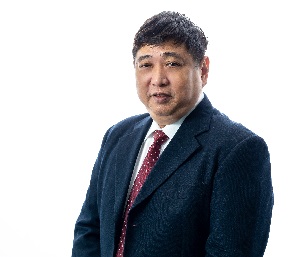Aligning organisational wellbeing with strategic vision in Asia-Pacific
- HRM Asia Newsroom

In the aftermath of COVID-19, Asia-Pacific’s work environment, including Singapore’s, is significantly changing as detailed in International SOS’ Risk Outlook 2024 for Asia-Pacific. According to the report, three-quarters of the surveyed organisations recognised an increase in employee expectations for their duty of care, marking a substantial shift in workplace responsibilities from government to employer-based and challenging traditional workplace norms.
Evolving workplace dynamics in Asia-Pacific
The contemporary Asian workplace is experiencing transformative shifts, driven by the advent of hybrid working models, the emergence of a multigenerational workforce, and a broadened scope of employer duty of care. Together, these elements underscore a paradigm shift in how work is structured, the expectations of employees, and the responsibilities of employers.
The expanded scope of duty of care
There is a pressing need for employers to extend their duty of care beyond the workspace. As workplaces evolve, employees face not just work-related pressures but also external stressors like political and economic uncertainties. These challenges can infiltrate the workplace and heighten risks like workplace violence. The expanded scope of duty of care not only addresses workplace safety but also provides support mechanisms that consider the wide-ranging needs and challenges faced by employees and their families.
Adapting to a multigenerational workforce
The traditional notion of a lifelong commitment to a single employer is diminishing as the older generation exits the workforce. Employers must now adapt their engagement and management strategies to the preferences of a workforce dominated by millennials, who bring different work styles and demands. This change calls for innovative approaches to foster an inclusive workplace that meets the needs of all generations and upholds organisational resilience.

“Employers must now adapt their engagement and management strategies to the preferences of a workforce dominated by millennials, who bring different work styles and demands.” – Dr David Teo, Regional Medical Director, International SOS
Hybrid working as a catalyst for change
Hybrid working has introduced a new era of adaptable work arrangements, with employees personalising their roles and hours. This flexibility requires employers to adopt a comprehensive approach to employee welfare that transcends the physical workspace and considers employees’ overall wellbeing and life circumstances. Despite this trend, some prominent tech industry employers are insisting on a return to the office, facing resistance from a new generation of employees who prioritise flexibility, even if it risks their employment. This indicates that the shift towards hybrid work is a persistent change in the employment landscape.
Strategic approaches to holistic employee wellbeing in Asia-Pacific
To tackle the changing workplace dynamics, organisations need strategies with a comprehensive and holistic approach, blending both internal initiatives and external partnerships to build a robust support system that addresses both immediate and long-term health and wellbeing needs of employees. These strategies include:
Enhancing internal support structures
- Adapt workplace policies to offer flexible schedules and remote work options, accommodating diverse life situations and reducing stress associated with rigid work environments.
- Invest in professional development programmes that not only enhance career growth but also promote mental wellbeing through personal achievement and satisfaction.
- Provide training for managers to identify and support employees with potential mental health issues.
- Integrate work health and wellness for a more comprehensive approach to workforce safety and health.
Utilising external resources and partnerships
- Engage with government-backed initiatives and programmes that offer resources for upskilling and wellbeing. For example, Singapore’s Ministry of Manpower (MOM) initiatives, such as Career Conversion Programmes, provide frameworks for upskilling that organisations can leverage.
- Align with national efforts to enhance workforce competencies and wellbeing, such as participating in mental health training and awareness campaigns sponsored by health ministries or public health bodies.
- Given budget and time constraints, organisations should employ surveys and analytical methods to design targeted wellness programmes that fit their unique needs, possibly with the aid of in-house or external wellness experts.
Building a culture of continuous improvement
- Foster an organisational culture that values feedback and is committed to regular review and enhancement of policies and practices related to employee wellbeing.
- Encourage leadership and management to lead by example in prioritising their wellbeing and supporting their teams in doing the same, creating an environment where wellbeing is a shared responsibility.
Collaborating with government and industry bodies
- Establish partnerships with government, healthcare organisations, mental health NGOs, and wellness experts to bring in external expertise and resources for employee wellbeing programmes. By aligning with governmental initiatives, it will help to enhance strategies and ensure sustainable success in a dynamic global environment.
- Participate in industry coalitions focused on workplace wellness to share best practices, learn from others, and collectively advocate for policies that support employee wellbeing.
These strategies are not just essential for meeting immediate employee needs but also facilitate the creation of a supportive work environment that promotes long-term development and wellbeing.
READ MORE: Singapore develops workplace wellbeing benchmark
Furthermore, these strategies not only mitigate high turnover risks but also ensure organisational resilience and competitiveness in a rapidly changing market. This is particularly critical in Singapore, highlighted by a December 2023 EY Advisory survey showing nearly half the workforce complementing job changes for improved benefits, amid the highest labour attrition rate in South-East Asia at 19.6% in 2022.
Conclusion
In navigating the future of work within Asia-Pacific, organisations must adopt comprehensive and holistic wellbeing strategies, incorporating flexible work, diversity, and improvement cultures, to surpass employee expectations.
About the author: Dr David Teo is Regional Medical Director, Asia, at International SOS.






